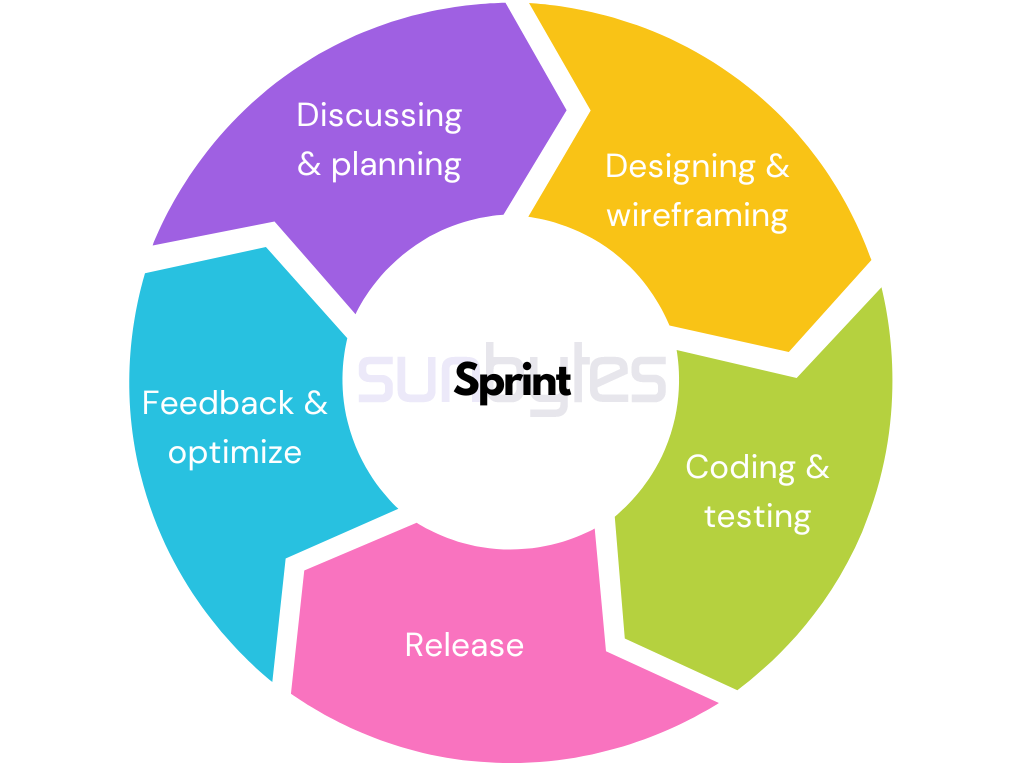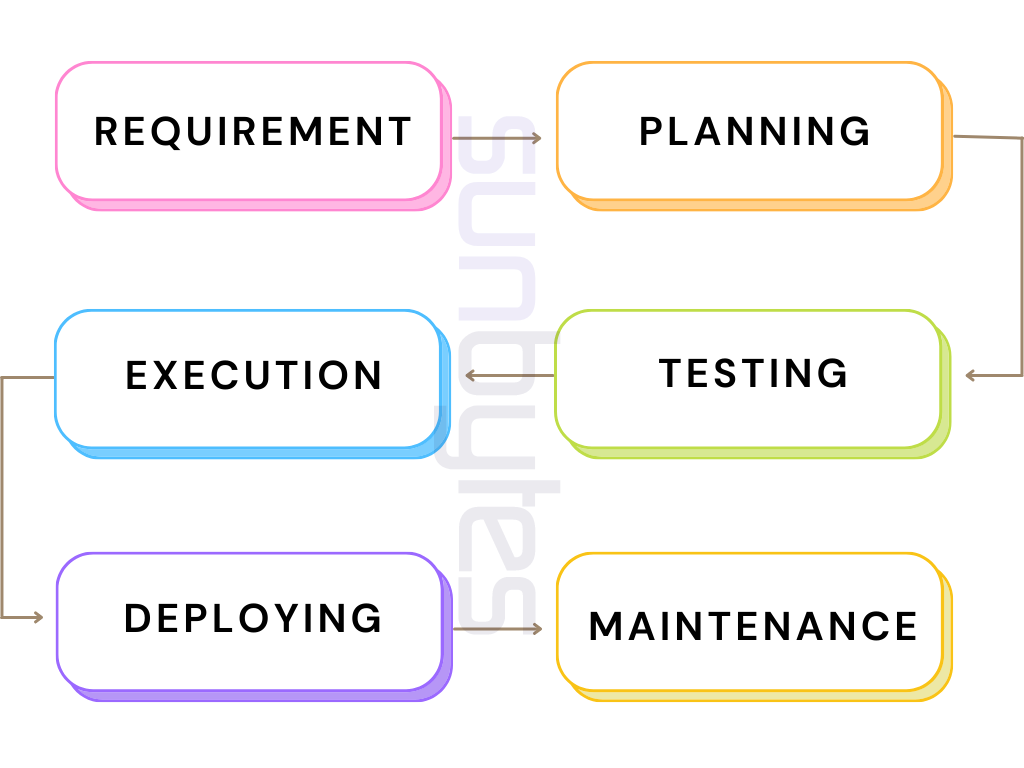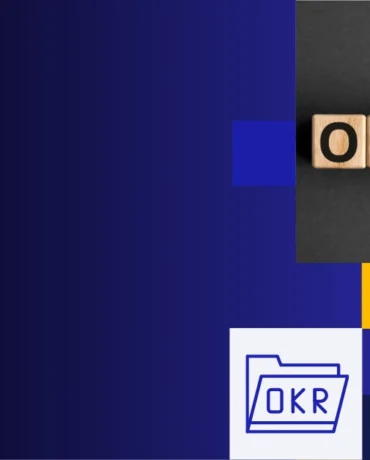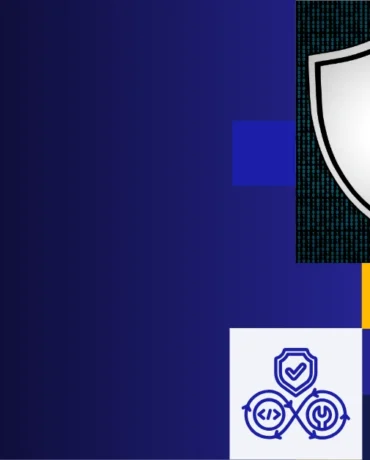Agile and Waterfall are today’s most widely used software development methodologies. Each has its strengths and weaknesses, and the choice between Agile vs Waterfall depends on various factors, such as the project’s complexity, scope, and team size. Choosing a suitable methodology can make a significant difference in the success of a project.
In this blog article, we’ll dive into the key differences between Agile vs Waterfall methodologies, their pros and cons, and which one to choose for your project. Whether you’re a developer, project manager, or business owner, this article will provide insights to decide which methodology to use for your next project. So let’s get started!
Overview of Agile and Waterfall
Before jumping to a conclusion to choose the best methodology for your business, it’s a must to understand both these terms and the differences between their process and structure.
What is the Agile methodology?
Agile methodology is a collective term that refers to a set of principles and practices developed by software developers in the 1990s. The word “Agile” was first used in the “Agile Manifesto,” a document created in 2001 by seventeen developers who met in Utah, USA.
Fast forward to this day, Agile is a management method that prefers the flexibility, collaboration, and rapid iteration. This method is entirely different from traditional project management methods, which were often inflexible and hierarchical.

Agile methodology highlights the importance of delivering value to customers early and through working software to get frequent feedback rather than waiting until the end of a project to deliver a final product. It also requires regular communication and collaboration between team members, encouraging teams to be self-organizing and empowered to make decisions.
The core principles of the Agile methodology include the following:
- Individuals and interactions over processes and tools
- Working software over comprehensive documentation
- Customer collaboration over contract negotiation
- Responding to change over following a strict plan
Benefits and drawbacks of Agile methodology
While Agile has gained widespread adoption in the software development industry, it has its limitations. Business owners must consider both the benefits and drawbacks of Agile methodology to determine whether it is the right approach for their project. Here are some potential advantages and disadvantages to keep in mind.
Benefits
Agile has been highly adopted by many tech companies since its debut two decades ago, as 71% of US companies are using this methodology for their software management. The reason behind its popularity, of course, lies in its advantages.
- Faster time-to-market: Teams using Agile methodology have increased their productivity by 25%, accelerating the software delivery time. Therefore, businesses can quickly release new features and functionality to customers.
- Made for adaptability: Agile allows unexpected changes during the development process, maybe due to customers’ feedback, team resources or external factors. This also means the team can instantly adapt to meet changing requirements and priorities in short interactions.
- Higher quality: Thanks to continuous testing and feedback during the development process, it’s more convenient to identify and address any arising issues to achieve a better outcome.
- Transparency is key: Agile methodology promotes collaboration between team members, stakeholders, and customers, ensuring everyone is kept informed about the project’s progress. Agile teams usually schedule daily meetings (face-to-face) to ensure that everyone is working towards the same objectives and to eliminate any confusion that may arise. This ensures the achievement of their goals.
- Customer satisfaction is on top of mind: Customer collaboration is one of the four main core principles of Agile. This involves being open to feedback and making sure that the end product is more likely to meet the needs and expectations of customers.
Drawbacks
While Agile methodology is no doubt beneficial for management and development, there are also some potential drawbacks that you need to consider.
- Lack of predictability: Teams who use Agile to manage projects focus on flexibility and adapting to change, which can make it difficult to predict the timeline and scope of the project. This can be problematic for stakeholders who need to plan and allocate resources.
- Requires experienced team: Agile methodology requires a team that is used to work collaboratively, communicate effectively, plan and be skilful enough to test the product in a rapid, iterative manner. It can be challenging for less experienced teams or teams new to the methodology.
- Insufficient document: Agile-style teams consider working software over comprehensive documentation. This means that teams should focus on code and testing rather than excessive documentation. However, this can be a drawback in situations where documentation is essential for future maintenance or updates to the software.
- Constant changes: This is very common in Agile and Scrum (a framework of Agile) projects. The frequent re-prioritization and adjustment between sprints can lead to extra context switching, which reduces productivity.
Overall, Agile methodologies have become very popular, and for a good reason. The benefits of Agile are significant, but it’s not a silver bullet, and it does bring some drawbacks and challenges. The fast pace of Agile is only suitable for some teams or projects, and it requires a high level of skill and commitment to be successful.
What is the Waterfall methodology?
Waterfall methodology is a linear and sequential approach to project management in which each phase of the project must be completed before moving on to the next. The stages typically include requirements gathering, design, development, testing, and deployment. Once the team conducts a phase, they will instantly move to the next one unless there are significant issues or changes. Waterfall methodology is often used for projects with well-defined and stable requirements, with clear scope and objectives. It can be less flexible than other methodologies, but its structured approach can provide more control over the project and allow for more accurate budgeting and scheduling.

Dr Winston W. Royce first described “the Waterfall methodology” in a 1970 paper titled “Managing the Development of Large Software Systems”. The Waterfall model gained popularity in the 1980s and 1990s as the software industry grew.
Advantages and disadvantages of the Waterfall methodology
Over time, the Waterfall methodology has been called out for its flexibility in the project, but there’s no one-size-fits-all method for every business. Despite the debate, companies still use this methodology for specific tasks, particularly those with well-defined requirements and where change is unlikely.
Advantages
Let’s discover some of the most popular advantages of the Waterfall model.
- Clear and well-defined requirements: Waterfall-style projects always have clear requirements gathering at the beginning of the project. This ensures that all stakeholders understand the scope of the project and can agree on the features and functionality that will be delivered.
- Easy to manage: This model’s linear and well-structured nature makes it easy to manage and control the project. Each phase of the process has clear goals and deliverables, which helps project managers easily track progress against milestones and adjust timelines as needed.
- Documents at every stage of the process: Because each phase of the Waterfall model has well-defined deliverables, more documentation is often produced than with other development methodologies. This can be beneficial for future maintenance or updates to the software.
- Testing before delivering: Since the testing phase comes at the end of the development cycle, you can reduce the likelihood of bugs or other issues that could negatively impact user experience. This ensures that the software is fully functional before it is released to users.
Disadvantages
Every methodology has its weaknesses, and Waterfall is just one of them. This section will help you to take a closer look at some of the limitations of this model before applying it to your business.
- Limited flexibility: The linear and sequential structure of the Waterfall model makes it more challenging to adjust changes during the process. Once a phase is complete, it can be costly, time and resource-consuming to go back to the previous step and review what went wrong.
- High risk: The Waterfall model assumes that the team is clear about all requirements at the beginning of the project. This can be risky, as it will be challenging to predict potential issues that arise in the middle of the process.
- Long development cycles: This methodology can lead to development in the long run as each phase of the process must be completed before moving on to the next one. This can be problematic in fast-moving industries where speed to market is important, and the working pace is changing constantly.
- Less interaction with customers: Projects under Waterfall management limit customer involvement, as requirements are typically defined in advance and handed off to the development team. This can result in a product that doesn’t fully meet the customer’s needs.
Agile vs Waterfall: Which one is the best for you?
Agile and Waterfall are popular methodologies for managing software development and other projects. From what we’ve gathered in this, it’s no doubt that both models have pros and cons, and there is no one-for-everything approach for all projects.
By understanding the strengths and weaknesses of each approach, you can determine which methodology best fits your particular project and team. Let’s summarize the pros & cons of both methodologies and evaluate which one is better for your business.
Commonalities of Agile and Waterfall
Both methodologies:
- Are for software project development and management
- Require planning, designing and structured approach to a project
- Focus on delivering high-quality software products
- Involve collaboration between stakeholders and team members
- have a set of defined deliverables
Differences between Agile vs Waterfall
Choosing Agile or Water ultimately depends on your team, project, and goals.
If adopting an Agile methodology, you can be very creative and flexible during the whole project. But you need to be aware of the balance between adapting to change and instituting a stable process. Meanwhile, going for a Waterfall model with its linear, sequential phases will ensure that projects proceed in an orderly fashion, with specific deliverables and reviews at each step. However, projects following this strict model can take a long time to complete and may deliver something that no longer meets the customer’s needs.
| Attributes | Agile | Waterfall |
|---|---|---|
| Development Approach | Iterative and incremental | Sequential and linear |
| Flexibility | High; adapts easily to changes | High; adapts quickly to changes |
| Customer Involvement | Continuous involvement throughout the project | Limited to initial requirements gathering and final delivery |
| Risk Management | Continuous feedback helps in early risk identification | Upfront risk assessment; issues come at later stages |
| Documentation | Minimal documentation; focus on collaboration | Extensive documentation required at every phase |
| Testing | Ongoing testing during each sprint | Testing occurs after the build phase |
| Timeline Predictability | Less predictable due to evolving requirements | Highly predictable as phases are defined upfront |
| Budget Flexibility | More flexible; adjustments are often made | Fixed budget set in the beginning |
| Best Suited For | Projects with evolving requirements and innovative needs | Projects with well-defined requirements and regulatory needs |
There is no one-size-fits-all solution. Many organizations adopt a hybrid approach using a mix of both Agile and Waterfall. For example, they may follow an Agile approach for development but use a Waterfall process for testing and deployment. Project managers must evaluate factors like project size, complexity, urgency, customer involvement, and team capabilities to determine the right approach for a project. With experience, organizations and teams can choose the techniques that suit them best and deliver the maximum benefits.
Conclusion
In summary, Agile and Waterfall both have their pros and cons. The debate of choosing Agile vs Waterfall is based on the needs of a project and organization to pick the suitable model and customize it for the best results. A pragmatic approach that balances flexibility and rigidity is likely to succeed.
If you want to find a dedicated team or team as a service that are experienced and skilful to effortlessly follow any of your business’ methodology approach, Sunbytes is your first call.
Drop us a line to receive free consultancy and let us help to plan out everything that aligns with your ultimate goal!


